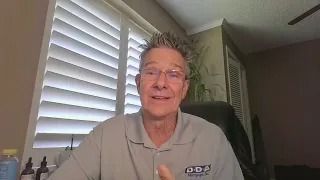Self employed with options on buying a home without tax returns
If you're self-employed, have 1099 income, or don't have traditional income, it can be tough to buy a home. You might have a high income and excellent credit, but unless you can prove it with tax returns, getting approved for a mortgage can be challenging.
Fortunately, there are options for people in your situation.
Here's what you need to know about each one:
Bank Statement Loans
You must have been self-employed for at least two years, and you need to provide 12 months' worth of bank statements showing your income. This is a common way for self-employed people to qualify for a mortgage without tax returns. A bank statement loan is a great loan product for the self-employed, business owners, entrepreneurs, consultants, realtors, and real estate investors. Read more about bank statement loans.
1099 Income Only
This option allows you to buy a home using stated income for one year only without tax returns. You'll need a letter from your CPA stating your expenses. Your income will be based on your 1099 income less your expenses. Watch our video about qualifying for a mortgage with a 1099 income.
No-doc Loans
The no-doc loan is a type of mortgage that allows borrowers to get a mortgage with little documentation. This means that you don't need to document your job or your income. You will need to provide some documentation about your assets. What you do need is to have a down payment of 20% or more and you need to have a high enough credit score. The credit score requirements are always changing. Generally, it is above 640. To find out the credit score you need to qualify call us today at (727) 784-5555.
With a no-doc loan, your rates will be higher than those on conventional loans because the lender has less information about you and what they're risking if they approve your application. The interest rate on a no doc loan is usually a point or higher than on a traditional loan.
Investment Property Rent Schedules
Investment properties with rent schedules allow you to buy an investment property as long as the appraiser's rent schedule exceeds the mortgage. This can work if you have other income sources like stocks and bonds or rental properties, but don't have a W-2 or 1099 proof of income. Getting a loan based on rent schedules is also a great option if your income is too low for a mortgage. This is one way to get into real estate investing without tax returns.
I'm Didier at DDA mortgage. I always want to give you options, so you can get the best loan with the best terms to fit your situation.
If you have any questions about buying a home without a tax return, call DDA Mortgage at
(727) 784-5555, or use the form below to send us your questions.
Have A Question?
Use the form below and we will give your our expert answers!
Reverse Mortgage Ask A Question
Start Your Loan
with DDA todayYour local Mortgage Broker
Mortgage Broker Largo See our Reviews
Looking for more details? Listen to our extended podcast!
Check out our other helpful videos to learn more about credit and residential mortgages.





